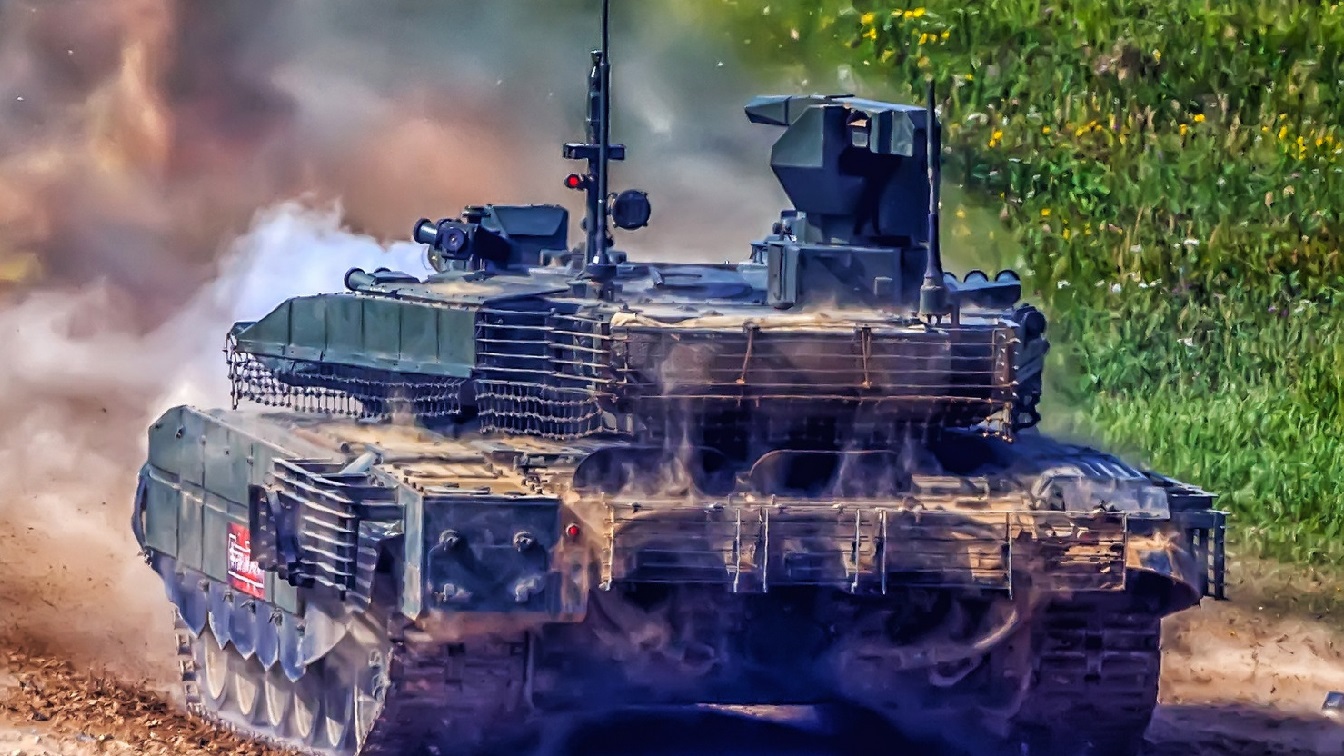Russia’s T-90M tank was – at least until the war in Ukraine – considered one of the best on Earth, compared many times to the M1 Abrams tank.
And yet, this supposed elite tank has been lost countless times as the war has progressed.
To make matters worse, many of these losses have been captured on social media.
Watch Ukrainian Soldiers Capture A Russian T-90M
A short video clip shared on social media back in mid-March appears to show at least three Ukrainian soldiers standing around an abandoned Russian T-90M tank.
The clip was shared on Twitter by an account that tracks the war in Ukraine, and the author of the post claims that the footage shows Ukrainian troops capturing a destroyed Russian tank in Kreminna.
“Trophy Ukrainian military captured a destroyed Russian tank T-90M near #Kremennaya,” the post reads.
The clip, however, could be showing something different. While the video is just seconds long, one side of the tank is visibly on fire, and the rest of the vehicle looks to have incurred fairly serious damage.
The clip could, therefore, be showing Ukrainian soldiers taking a look at the vehicle to see whether it is recoverable.
It may also show the soldiers taking steps to ensure that it is not easily recoverable by the Russians.
Russia Keeps Losing “Invincible” T-90M Tanks
Losing even a single T-90M tank is a huge problem for Russia.
The country’s only two functioning tank factories, Uralvagonzavod and Omsktransmash, are struggling to produce even 20 new T-90M and T-72B3 tanks per month.
Russia’s insufficient tank manufacturing capacity also means the two factories have been forced to dedicate valuable time and resources on restoring and upgrading older T-72 tanks left in storage for decades.
Russia is digging deep into its old stocks, too, even deploying T-80 and T-62 tanks. There are even reports of old T-54 and T-55 tanks – like as in World War II era technology – being sent to die in Ukraine.
The two factories are restoring up to 50 tanks per month, meaning Russian forces have access to fewer than 100 tanks per month, many of which simply can’t withstand bombardments from Wester anti-tank weapons used by the Ukrainian side.
The fact is that Russia has a finite number of the older tanks, meaning the Kremlin’s ability to equip its troops in Ukraine is weakened as every month goes by.
When the war began, Russia had roughly 2,500 T-90, T-80, and T-72 tanks in its stockpile.
After a year of fighting in Ukraine – significantly longer than the Kremlin had expected the invasion would take before Ukraine gave in – Russia has fewer than 1,000 of those tanks left.
After another year of conflict, Russia will not only likely have lost the tanks it started with, but domestic manufacturing and refurbishment may not be able to keep up with the demand of Russian soldiers.
It means that, in the coming months, Russia will be forced to re-evaluate the situation.
It could mean negotiations, it could mean more manufacturing facilities open domestically, or it could mean the Kremlin reaching out to its allies and requesting their tanks.
Trophy
Ukrainian military captured a destroyed Russian tank T-90M near #Kremennaya
???????????? #SlavaUkraïni pic.twitter.com/APcYUZ7qEw— Feher_Junior (@Feher_Junior) March 16, 2023
Jack Buckby is 19FortyFive’s Breaking News Editor. He is a British author, counter-extremism researcher, and journalist based in New York. Reporting on the U.K., Europe, and the U.S., he works to analyze and understand left-wing and right-wing radicalization, and reports on Western governments’ approaches to the pressing issues of today. His books and research papers explore these themes and propose pragmatic solutions to our increasingly polarized society.

